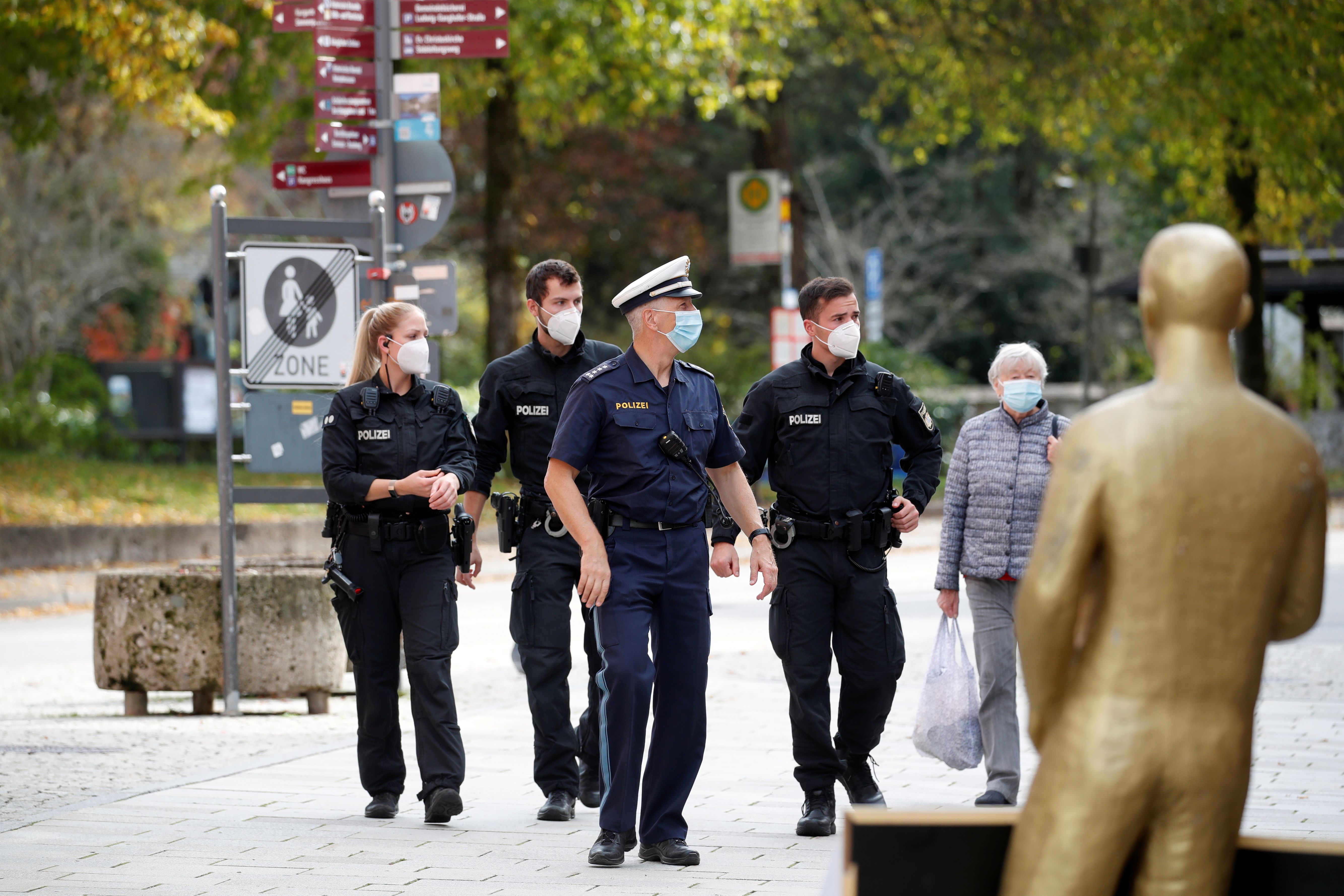
In early autumn, Germany recorded a large increase in the number of SARS-Cov-2 infections. The weekly average of new cases in the second half of October exceeded 7,000 a day. Particularly disturbing data are coming from large cities—Berlin, Cologne, Stuttgart, and Düsseldorf—which with infection levels of 50 or more per 100,000 residents were classified as high-risk, the so-called hotspots.
Although the situation is clearly better than in other European countries, Angela Merkel’s government began to consider tightening control measures and a partial return to restrictions on interpersonal contacts. In the federal structure of the state, however, this requires an agreement with the authorities of the Länder, which ultimately decide on detailed solutions in the fight against the pandemic. The advantage of this model is the adaptation of tools to local conditions. However, it also raises problems, for example, a lack of transparency and confusion for citizens who face different regulations depending on the region. As early as the spring, they were the source of disputes, so this time Chancellor Merkel decided to pre-empt the problem and negotiate with the federal states a possibly uniform and, at the same time, more restrictive approach. A joint conference with the participation of the heads of governments of the 16 federal states was to serve this purpose.
Warning Thresholds
The most important findings relate to two thresholds that define the scale of the epidemic danger. The first is 35 new infections daily per 100,000 residents for seven days. It has been observed that infections spread rapidly after this threshold is reached, therefore the regions exceeding it should introduce restrictions as soon as possible. This includes the requirement to wear masks in public places where people are close together for extended periods. Moreover, the permissible number of people gathering in a public space, for example, a party in a pub, should not exceed 25, or 15 in private meetings. There are also limits on the opening hours of restaurants.
Merkel did not manage to convince the heads of government of the federal states to take more decisive actions when the first threshold was met, instead only at 50 or more new infections per 100,000 residents for seven days. Restrictions include the obligation to wear masks in public places in general and a 10-person limit for meetings. This refers to private spaces, too, and participants cannot come from more than two households. The restrictions also include official events in which no more than 100 people may participate, as well as restaurants and bars, which must close at 11 p.m. If the actions taken are not effective, the authorities will introduce further restrictions, such as limiting the number of people in meetings to five.
Movement Restrictions
A difficult point in the negotiations was the issue of the freedom of German citizens to travel between the federal states. Some states have a so-called “overnight ban” when people coming from hotspots are not allowed to use hotels and resorts. However, the limitation can be omitted by presenting a negative coronavirus test result in the last 48 hours.
Merkel’s government wanted this rule to cover the entire country. Many Länder, such as North Rhine-Westphalia, Hamburg, and Rhineland-Palatinate, protested, pointing out that business travel was essential to the economy and that the risks associated with it were low. On the other hand, Schleswig-Holstein, Mecklenburg-Vorpommern, and Brandenburg leaned towards the chancellor’s position. In the absence of an agreement, the problem is to be taken up during the next negotiations on 8 November. Merkel’s chances of breaking the resistance of the Länder are not very good, especially after the verdict of the administrative court in Baden-Württemberg, which questioned the previously introduced “accommodation ban” in this state shortly after the conference.
Protection of the Economy
The actions taken by the German authorities are an attempt to find a balance between the need to stop the pandemic and avoid a second full lockdown, which would aggravate the economic crisis. There is growing concern about the condition of the economy. Just before the conference of the chancellor and prime ministers of the federal states, leading economic institutes published a joint forecast that shows a slower-than-expected improvement in the situation in the late summer. Many sectors continue to suffer from restrictions and there are is rising pessimism about the scale of future bankruptcies. There is still a chance that GDP will drop by “only” 5.4% in 2020—definitely less than Italy or Spain, for example, which face a double-digit recession. The prerequisite, however, is to avoid a full re-closure. If it occurs, it will be necessary to return to the forecasts from April that assumed a 10% decline in GDP and a much longer path for the economy to return to normal.
Therefore, as long as possible, the authorities will avoid general restrictions, such as the closure of schools and kindergartens. The priority will be to refine actions related to exceeding the thresholds and implement them quickly at the local level. The sectors of the economy most affected by the restrictions (mainly gastronomy and tourism) can still count on financial aid, as announced by the Ministry of Economy. In addition, more activities will be carried out, such as the improvement of digital warning apps for those who have been in contact with infected people, involving the Bundeswehr in supporting the health authorities and healthcare institutions, as well as social care homes, and extending the testing regime. If the situation abroad deteriorates further, visitors to Germany must consider they may need to quarantine or, to avoid it, present a negative coronavirus test (since 22 October, this rule also covers visitors from Poland).
Conclusions
The plan against the further spread of the coronavirus announced by the chancellor and prime ministers of the federal states is politically significant. The grand coalition of Christian Democrats (CDU / CSU) and Social Democrats (SPD) is fighting to maintain the high level of public support it gained (or rather regained) in the fight against the first wave of the pandemic. The aim is to maintain a good record until next year’s elections to the Bundestag and the parliaments of the eastern federal states.
The opposition recognised the importance of the political dimension of the 18 October conference in the Chancellor’s Office and began to demand parliamentary co-determination in implementing new strategies to fight the pandemic. The dispute over the division of competences in healthcare policy between the federal level controlled by Minister Jens Spahn—one of the Christian Democrats’ candidates for the future chancellor’s office—and the respective ministries of the Länder also quickly returned. There are many indications that these are already actions taken in the logic of the election campaign. This means that, unlike in the spring, the decisions of the government may be subject to sharp criticism and public protests fuelled by political competitors. The anti-system AfD will be particularly active, as it counts on the support of voters who do not want new restrictions.
The decisions of the chancellor and prime ministers of the federal states are important for their European neighbours, too. The introduced restrictions will have an economic price, which will mean, for example, a possible decrease in demand for imports (Poland can be particularly affected) as well as rising costs of travel and transport. The strategy of local restrictions adopted currently by Germany, however, reduces the risk of introducing general restrictions, including at borders, which would be much more severe for cooperation. The German authorities want to avoid disruptions on the common market, which is crucial to the health of the EU economy. This is why Germany will place greater emphasis on coordination of actions, sharing experiences in fighting the pandemic and reacting faster to critical situations in its neighbours, as evidenced, for example, by the hospital treatment offer for patients suffering from COVID-19 submitted to the authorities of Czechia and the Netherlands. The second wave of the pandemic also increases the pressure on Germany, which holds the presidency of the European Council, to push through the EU’s “reconstruction fund” as soon as possible. The highly likely deepening of the recession increases the strategic importance of this programme for the European economy.




